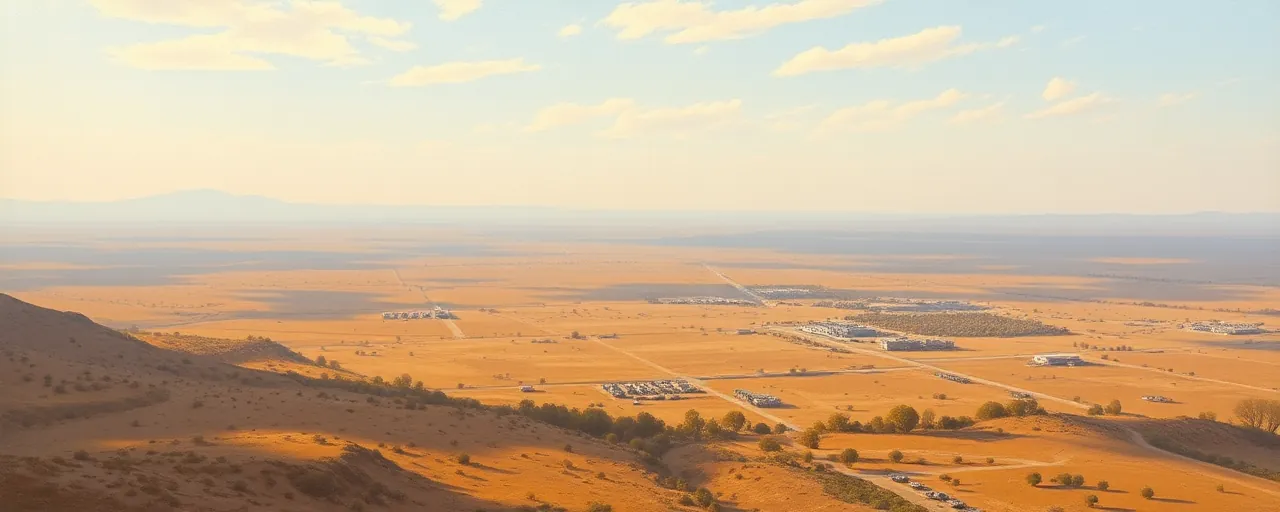A Living Legacy in New Mexico
Roughly 300 cadets from the New Mexico Military Institute and other Senior Reserve Officers’ Training Corps programs will descend on Fort Stanton-Snowy River Cave National Conservation Area this week, from April 10-13. Located near Lincoln, New Mexico, the site will buzz with land navigation exercises and small unit tactics training, visible to anyone driving along State Road 220 near Sierra Blanca Regional Airport. It’s a striking scene, military gear clashing against the quiet expanse of public land, and it’s all part of an effort to keep the area’s history breathing.
Fort Stanton isn’t just any patch of dirt. Established in 1855 as a U.S. Army post, it’s one of the best-preserved 19th-century forts in the country, with original buildings like officers’ quarters still standing. The Bureau of Land Management (BLM), which oversees the 25,080-acre site, sees this training as a way to tie the past to the present. Warren Kasper, the area’s manager, notes that the fort’s military roots make it an ideal spot for cadets to sharpen their skills, bridging history with hands-on experience.
Public Lands, Military Hands
The BLM juggles a lot on its plate, managing 700 million acres nationwide for everything from grazing to recreation. Military training is just one piece of that puzzle. In places like Fort Stanton, or even the sprawling 870,000-acre training grounds near Fort Wainwright in Alaska, the agency carves out space for soldiers while trying to keep the land usable for everyone else. No live ammo will be fired this week, a detail meant to ease any local jitters about noise or safety, but the military’s footprint will still be felt.
This isn’t new territory for the BLM. Since the 1960s, vast swaths of public land, like the Yukon Training Area, have been set aside for exercises. The cadets’ drills in Elk Valley are small potatoes compared to those massive operations, yet they highlight a broader reality: federal lands often double as proving grounds. Advocates for military readiness argue these spaces are critical for preparing troops, while those focused on conservation point out the need to protect habitats and public access. Both sides have a point, and the BLM is stuck threading the needle.
Echoes of Preservation and Pressure
Fort Stanton’s story goes beyond soldiering. Over the decades, it’s been a tuberculosis hospital, a WWII internee camp, and now a state monument drawing curious visitors. Preservationists value its intact structures as a window into America’s frontier days, much like Fort Dobbs in North Carolina keeps the French and Indian War alive. But using it for training stirs debate. Some historians and locals see it as a fitting tribute to its origins; others worry wear and tear could chip away at its historical bones.
Military training on public lands can cut both ways ecologically, too. Research shows restricted areas often shield rare species, like the eastern regal fritillary butterfly thriving amid controlled burns at Fort Indiantown Gap. Yet poorly managed exercises risk soil damage or contamination. The Sentinel Landscape Partnership pushes for a middle ground, funding projects to boost soil health and wildlife alongside military goals. At Fort Stanton, the limited scope of this week’s training suggests minimal impact, but it’s a reminder of the delicate balance at play.
What the Public Sees
Spotting camo-clad cadets near a civilian airport might raise eyebrows, and how people feel about it varies. Studies show Americans tend to respect the military, though trust has dipped lately, tangled up in politics and distant wars. The BLM flags this training upfront, hoping transparency keeps tensions low. Historical echoes linger here, too, from World War I propaganda rallying support to today’s wider gap between civilians and an all-volunteer force. For some, it’s a reassuring sight; for others, a jolt of unease.
In the end, Fort Stanton’s latest chapter blends gritty practicality with a nod to its past. The cadets will leave after a few days, their maps folded and boots muddy, but the land stays, shaped by their steps and countless others before them. It’s a place where history doesn’t just sit still, it moves, and that’s worth a closer look from anyone passing by.
